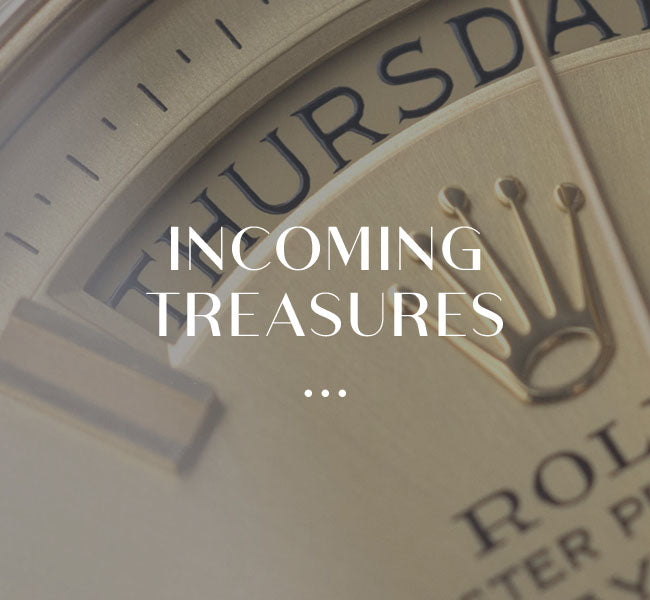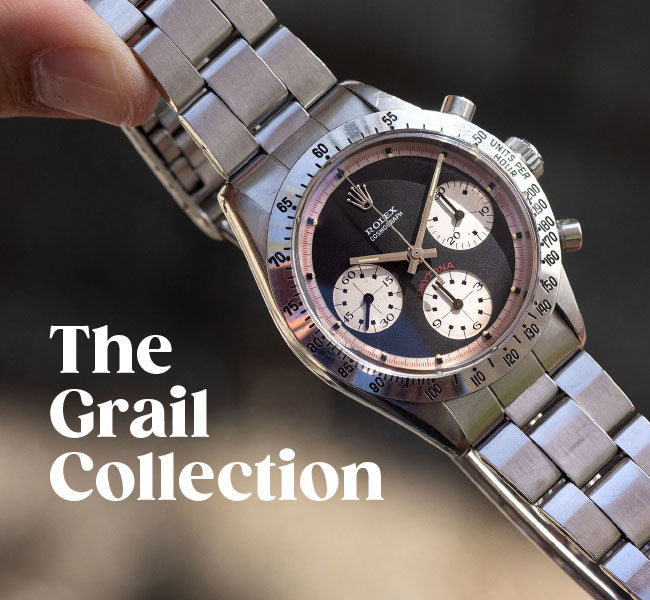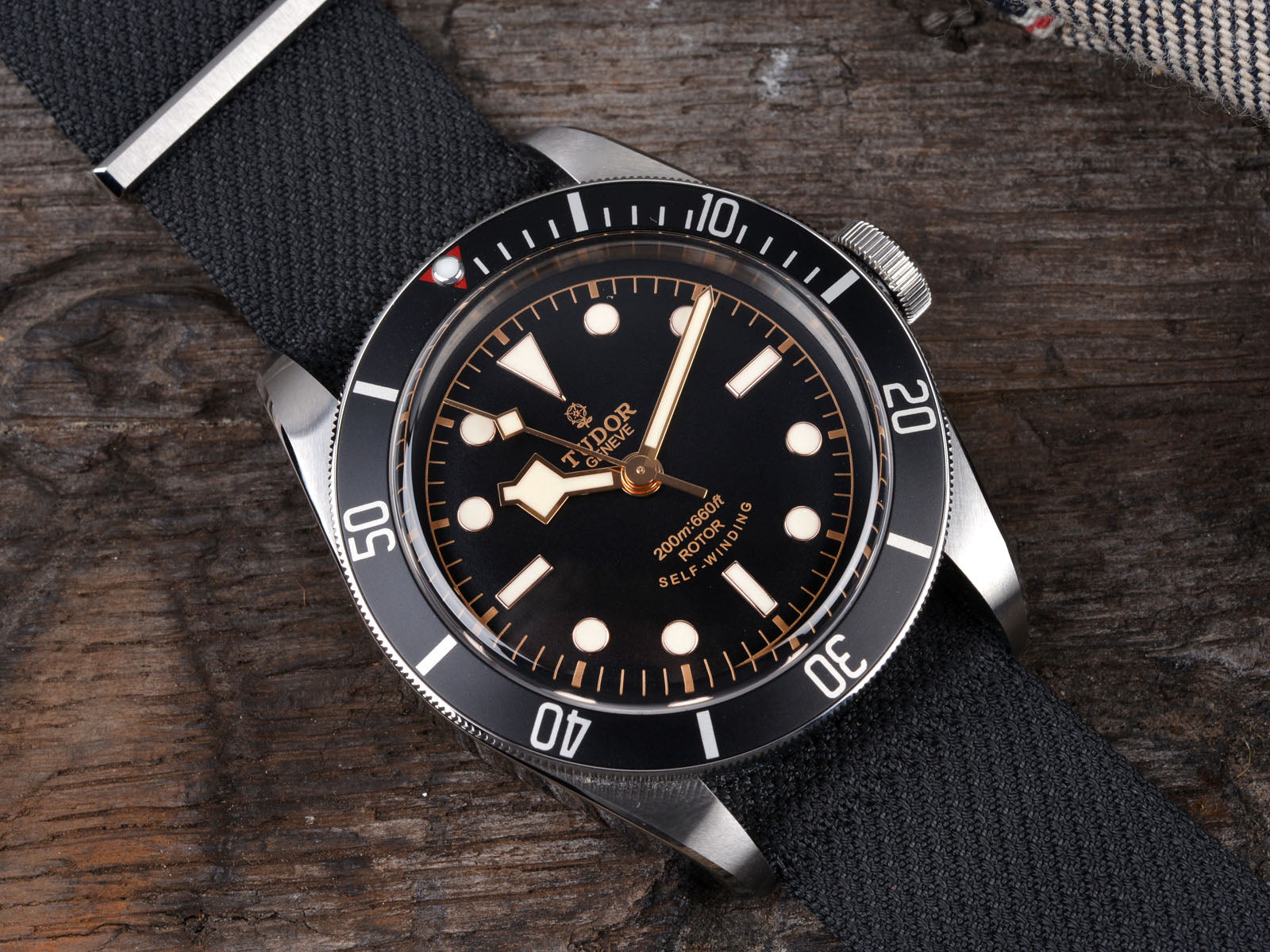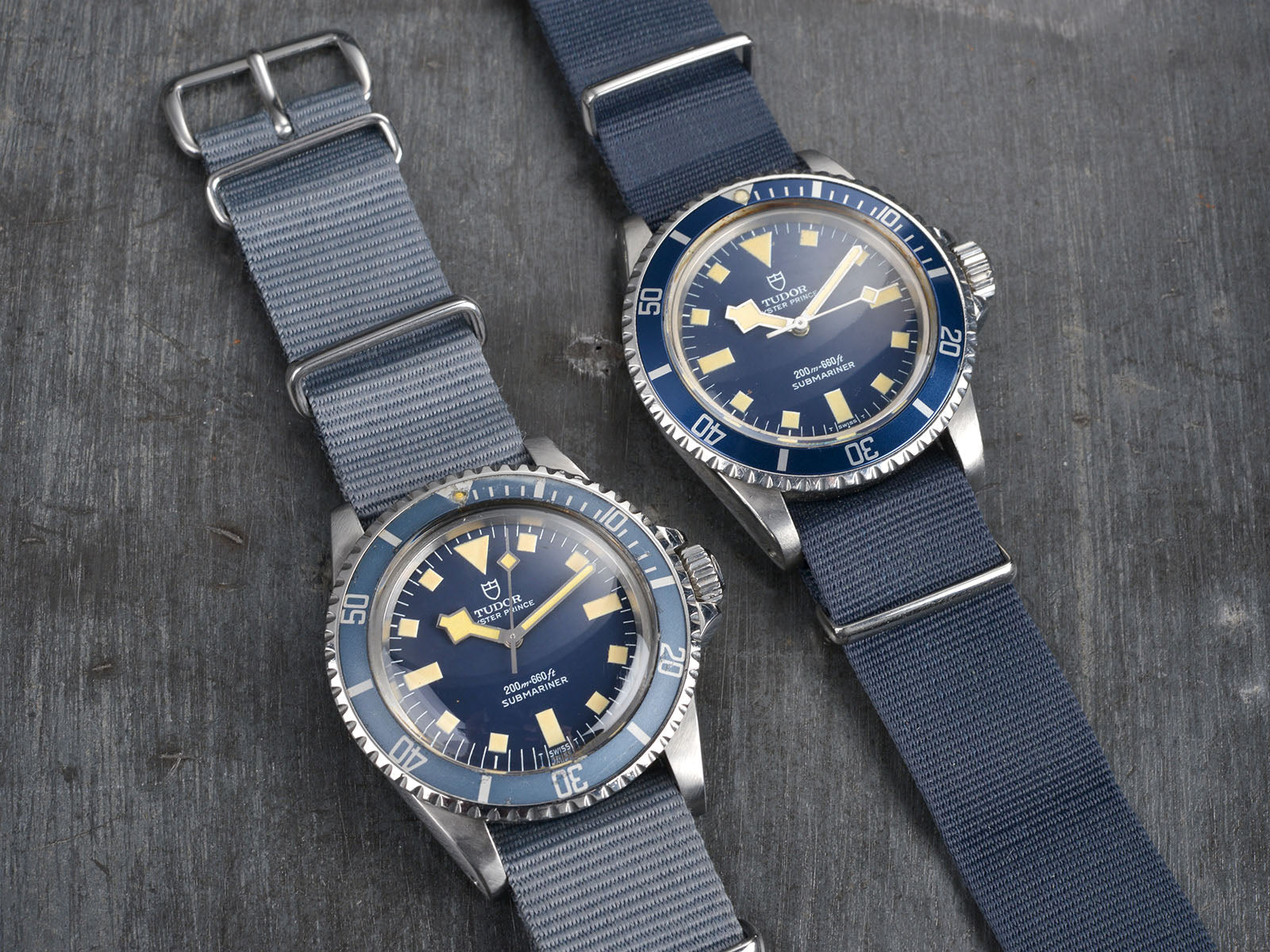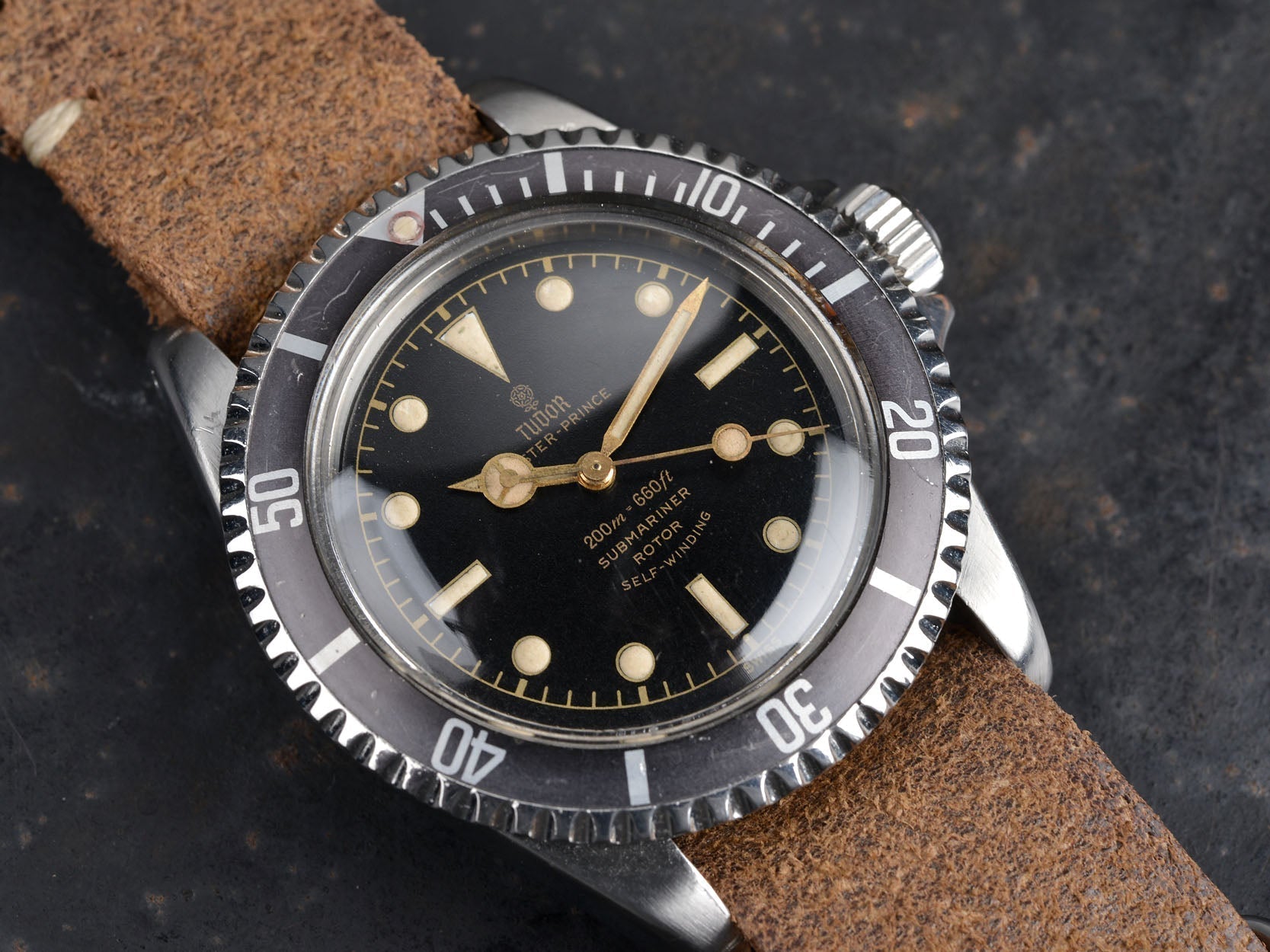
Spot On - Tudor Submariner 7928 - The Exclamation Dot Era
I’ve written fairly extensively about Tudor Submariners here in the past. One thing is for sure, vintage Tudor watches have taken a huge leap in both popularity and value over the past five years and in some cases are equal or ahead to vintage Rolex – especially when it comes to the Submariners and the Chronographs. A mint condition Tudor Homeplate is within the same financial bracket as a Daytona, equally some snowflakes are selling for more than a vintage Rolex 5513.
The 7928 Story
The Tudor Submariner that had the longest production run was the reference 7928 and I have written before here about the development of this reference. The main development in the case profile of these watches were the crown guards, which changed four times over the reference’s lifespan. The 7928, like all Tudor Submariners, was developed with the French Navy, the Marine Nationale. The 7928 was the first Tudor sports watch to feature crown guards, which were introduced following feedback from the divers that the crowns on the ‘Big Crown’ Submariners (ref 7924) were very prone to getting knocked and thus flooding the watches.

Dial Detail
The first dials in these watches were gilt and featured closed minute tracks known to collectors as ‘chapter rings’. One point of interest is how these dials were manufactured. The modern Tudors have a black dial with lettering and minute markers painted in a gold colour, on the surface of the dial. Back in the 50s when these watches were first introduced, the gilt details one sees on the dial are actually the brass dial plate showing through ‘text-shaped’ spaces in the the gloss paint; so the text was printed in relief.
Dial Developments
There were many different dial layouts during the decade long lifespan of the 7928. From all gilt dials, transitioning to silver lettering with gilt closed and then open minute tracks and finally white lettering and outer tracks. From the early gloss dials Tudor moved towards matte dials, in a similar time frame to Rolex with the 5513 Submariner. The very last 7928s featured the introduction of the shield logo, replacing the long serving Tudor Rose, a staple since the early to mid 1950s.
Dial Danger
It has been long documented that the watches of the 1930s-1950s extensively used radium as the luminous material. At the time there were no significant worries about the danger of radium on people’s health and well-being. In fact, the consumer market was punctuated with products laced with Radium, including toothpaste and drinks – under the banner of radium being good for you! Towards the end of the 1950s, however, it became clear that in fact radium was lethal and the watch industry had to move (quickly) away from radium and into using tritium, which had similar luminous properties, but without the risk to the wearer and more significantly the manufacturers.
Dial Dots and Dashes
The dial makers had to store the watches carefully and it was important for both the dial makers and Rolex to know which dials were safe to handle and put in watches for the public. We know that both Rolex and Tudor always used up all stocks of dials, cases and casebooks…a point that makes our passionate hobby so exciting and at times infuriating as we try to piece together the chronology of our beloved watches! To signify that the dials had safe levels radiation in the luminous, Rolex and Tudor devised system – a code of sorts. In around 1962 small dots were applied the edge of the dial, directly below the 6 0’clock marker, hence the nickname exclamation mark. These watches typically features a much less radioactive mix of luminous material. A year later a small horizontal line was added to dials, which signified an even lower radiation level – these are known as the ‘underline’ dials seen on Tudor 7928s in around 1963.
A Dial (and Watch) too Die For
We are delighted to be able to offer you all this beautiful example of a Tudor Submariner Reference 7928 – The Exclamation Dot. This watch ticks all the boxes for the serious Tudor Sub lover. The immaculate gilt dial is beautifully framed by the chapter ring and the gilt hands feature the lollipop, oversized bubble, seconds hand with patina that match the glossy dial perfectly. The faded fat font bezel insert sets the dial off and gives the watch a great, classic vintage look. These watches are becoming increasingly difficult to source in this condition and we are sure you will be very very happy with it!
